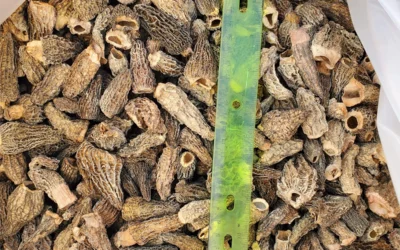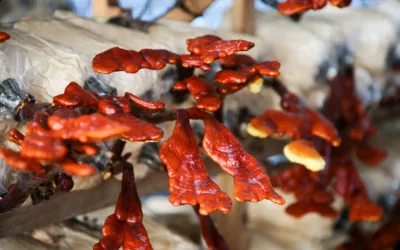
If you are someone who is already familiar with Psilocybe cubensis and wanting to expand your research to other active mushroom species, Panaeolus cyanescens are the perfect place to start.
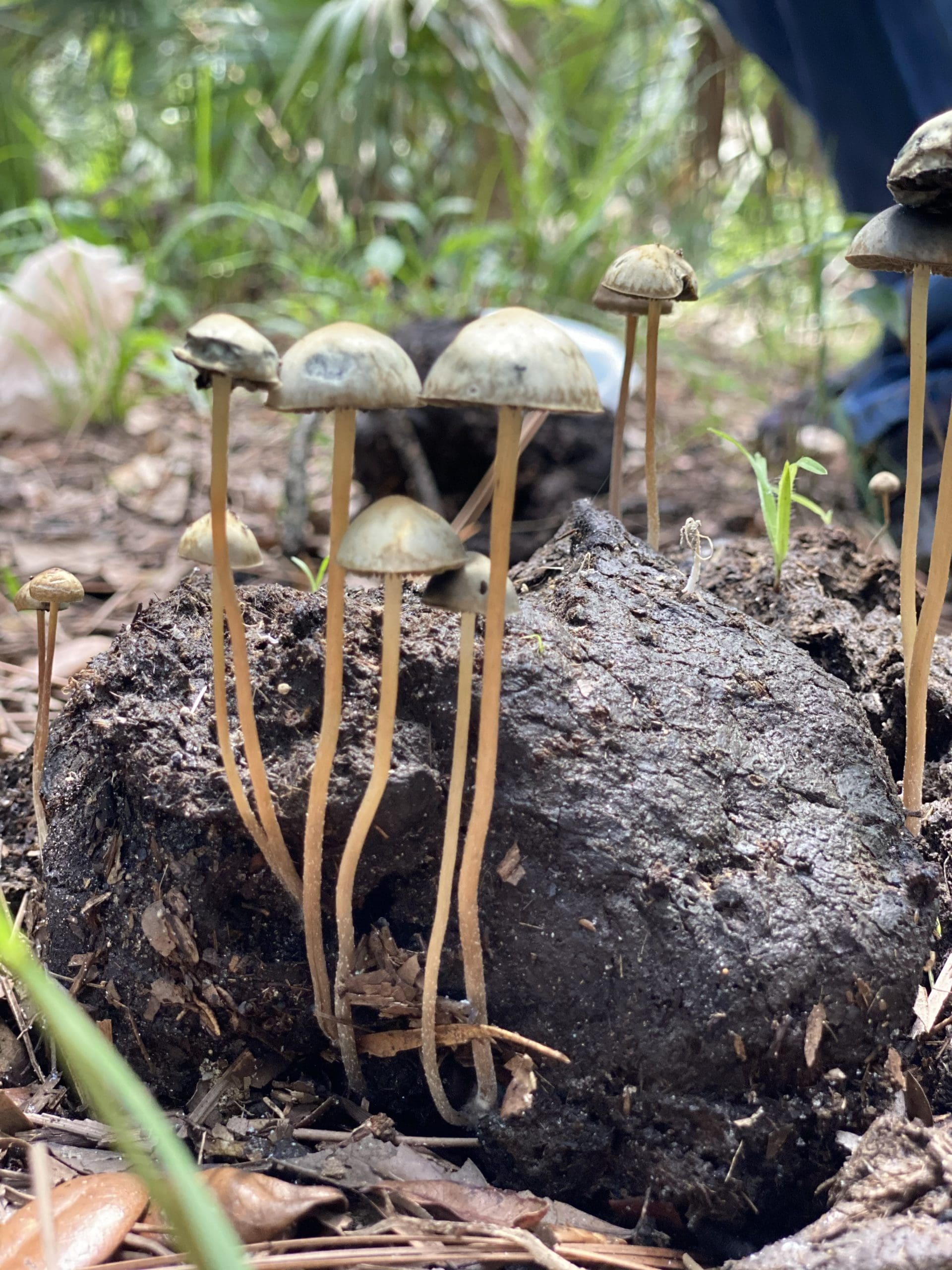
About Panaeolus Cyanescens aka “Pan Cyans”
Panaeolus cyanescens, also known as Pan Cyans, Blue Meanies or Copelandia cyanescens, are a coprophilous mushroom, meaning they thrive on animal dung. They are a potent magic mushroom, sometimes described as two to three times the potency of a wild Psilocybe cubensis. Hidden deep in online forums for years, little information was available on the domestication of these species until recently.
Today Pan Cyan mushrooms have quickly become a major interest of growers across the globe. If you are already familiar with cubensis strains such as Golden Teacher, Penis Envy and Tosohatchee, but have not heard of Pan Nec’ D, get ready for a whole world of novel fungal exploration!
Panaeolus cyanescens are not to be confused with Psilocybe cyanescens (aka Wavy Caps), which are a uniquely potent wood-loving mushroom found in high numbers across the Pacific Northwest. While Psilocybe cubensis and Panaeolus cyanescens can be found growing in the same spot, you will not find Psilocybe cyanescens in the same environment as Pan Cyans.
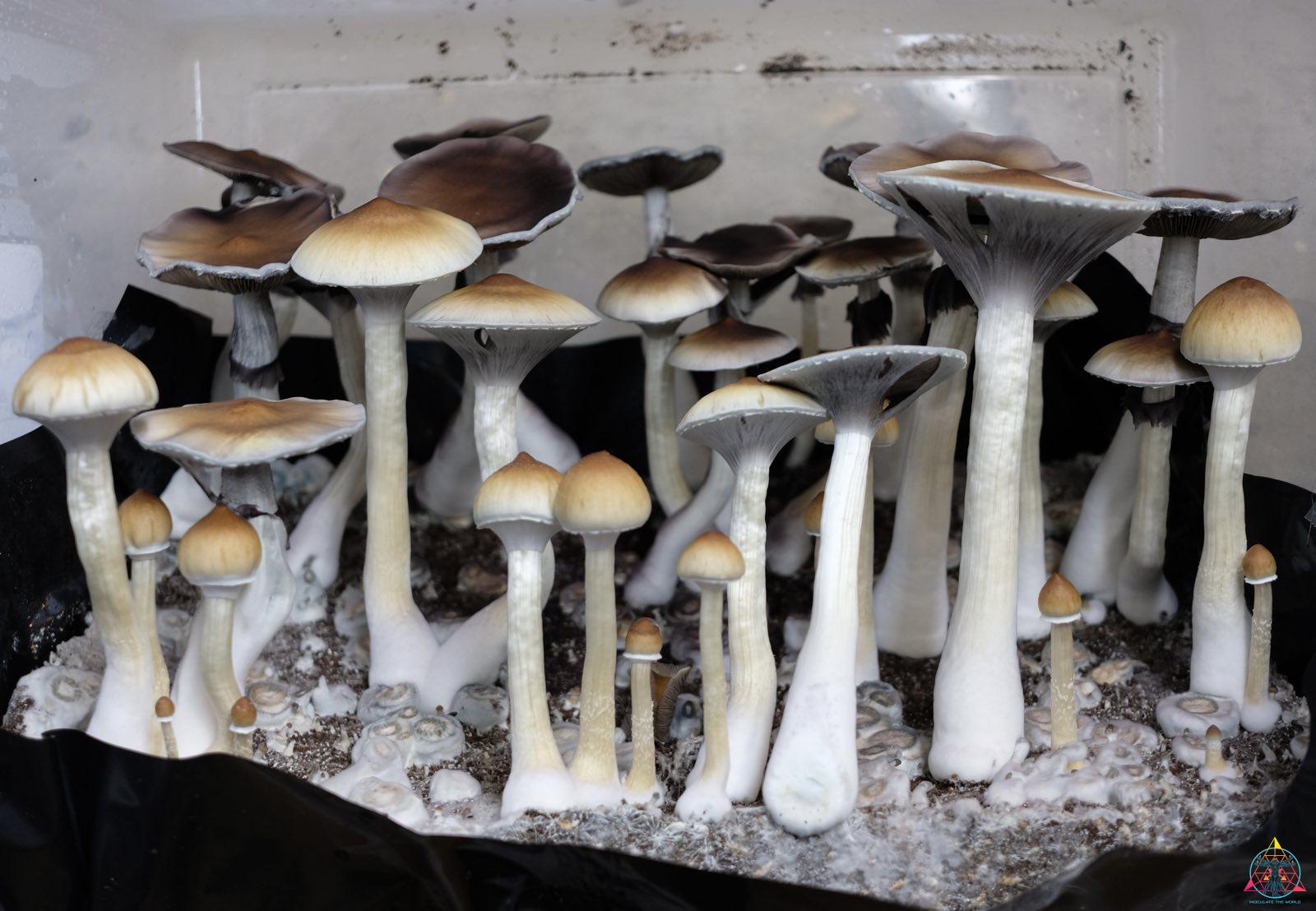
Psilocybe cubensis vs Panaeolus cyanescens
Psilocybe cubensis, known as Cubensis, Cubes, Gold Caps and many other terms, are also a coprophilous mushroom, thriving in many of the same environments as Panaeolus cyanescens. Cubensis mushrooms are some of the most commonly researched psychedelic mushrooms due to their ease of domestication. That’s why they’re the magic mushroom species currently in the spotlight as a treatment for depression among their other therapeutic benefits. But it’s because Psilocybe cubensis has been cultivated for the last hundred years indoors using spores that’s allowed more information to be gathered around the species compared to Pan Cyans.
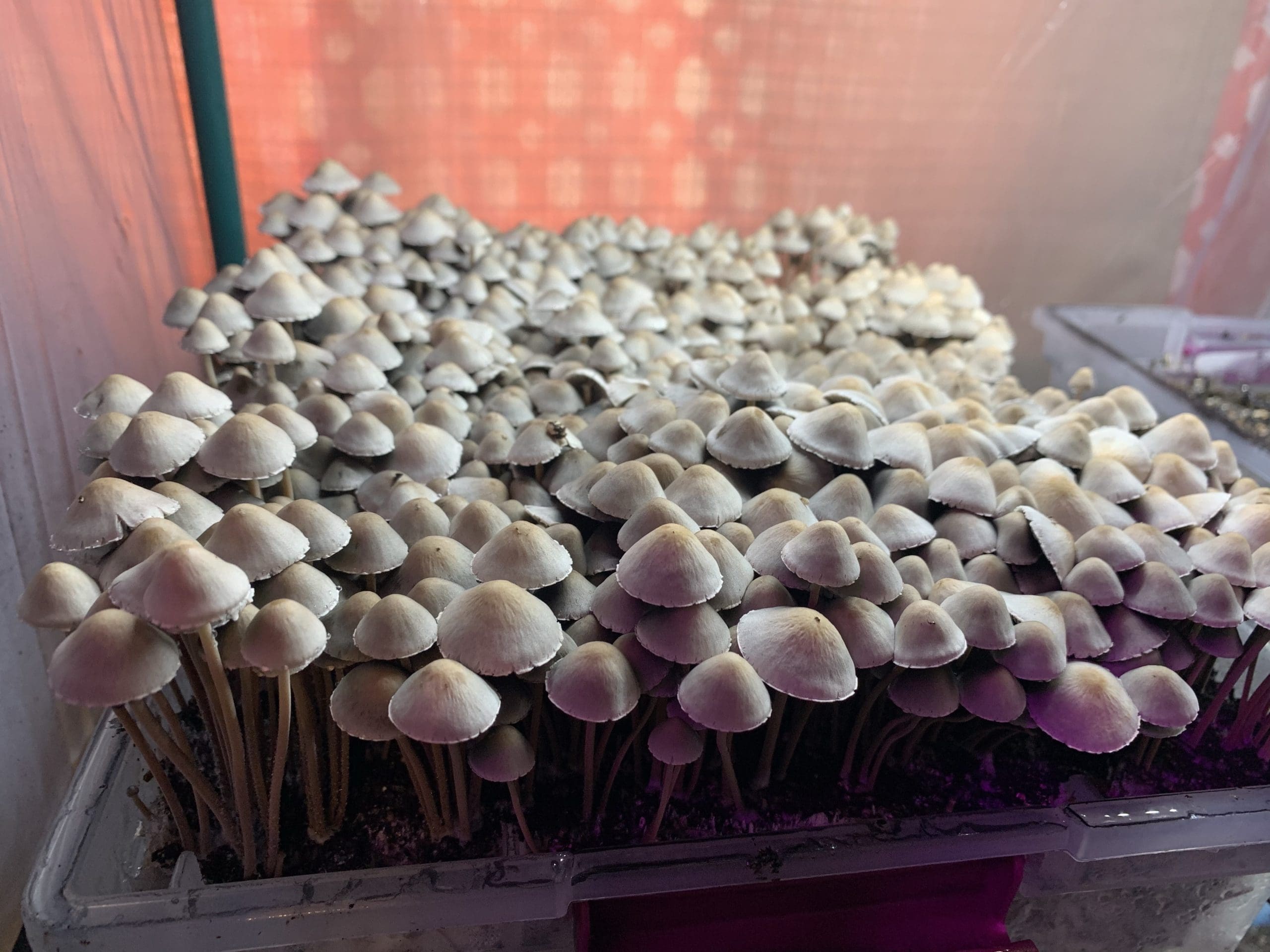
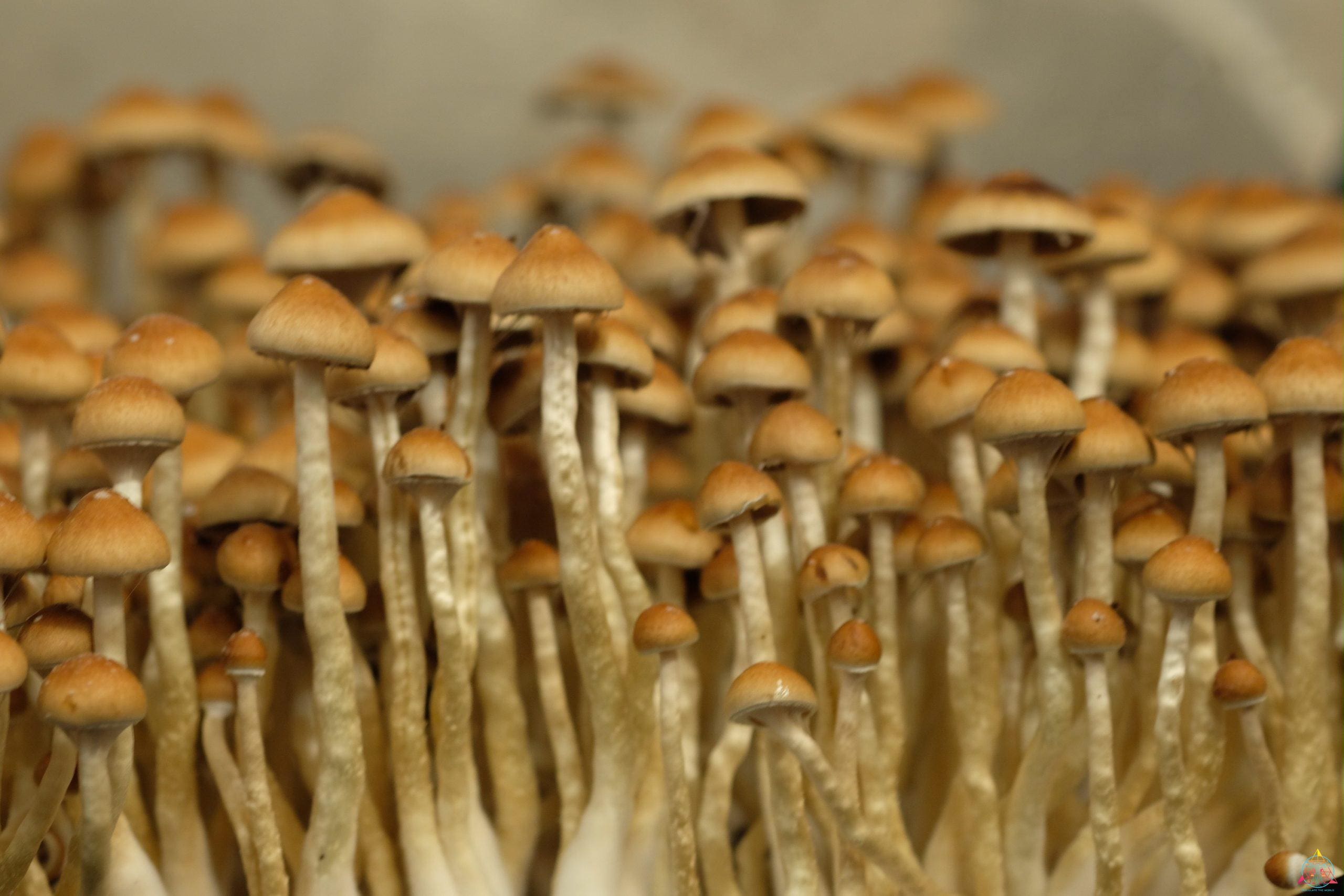
Pan Cyans vs Cubensis: Which Is More Potent?
Pan Cyans and Cubensis fruits both contain the psychoactive chemicals psilocybin and psilocin. When ingested, these mushrooms will induce a psychedelic experience that lasts up to eight hours. There is much debate as to whether pan cyan mushrooms or cubes are more potent. If you ask our opinion, we will tell you Panaolus cyanescens are significantly stronger than Psilocybe cubensis. The strength of these mushrooms could be lent to the high levels of psilocybin and psilocin, or it could be due to other active compounds present that we have yet to quantify.
The potency of both mushrooms can vary greatly depending on many factors including: the origin of the collection, whether they are wild mushrooms or gathered from a domesticated grow, the substrate, and the specific strain being tested. These are just a few of the many factors that play into the potency of magic mushrooms.

Panaeolus cyanescens vs Psilocybe cubensis Habitat
Both Panaeolus cyanescens and Psilocybe cubensis mushrooms are found in subtropical climates on various types of animal dung including: cattle, elephants, zebra and rhinos. In fact, Pan Cyans and Cubensis can be found growing together on the same piece of bovine dung. During many of InoculateTheWorlds hunts in Florida, we have seen Pan Cyans growing inches from Cubensis mushrooms.
Panaeolus cyanescens have a slightly larger geographic reach than cubensis. Pan Cyans can be found in places such as Europe, Africa, Malaysia, Thailand, Australia and tropical islands across the globe. In the United States, Panaeolus cyanescens can be found all over the Southeast, with particularly large populations in northern and central Florida.
While common in their distribution, it is not always guaranteed you will find both species in the same areas. In Hawaii for example, Pan Cyans are plentiful while Psilocybe cubensis have yet to be reported on any of the islands.
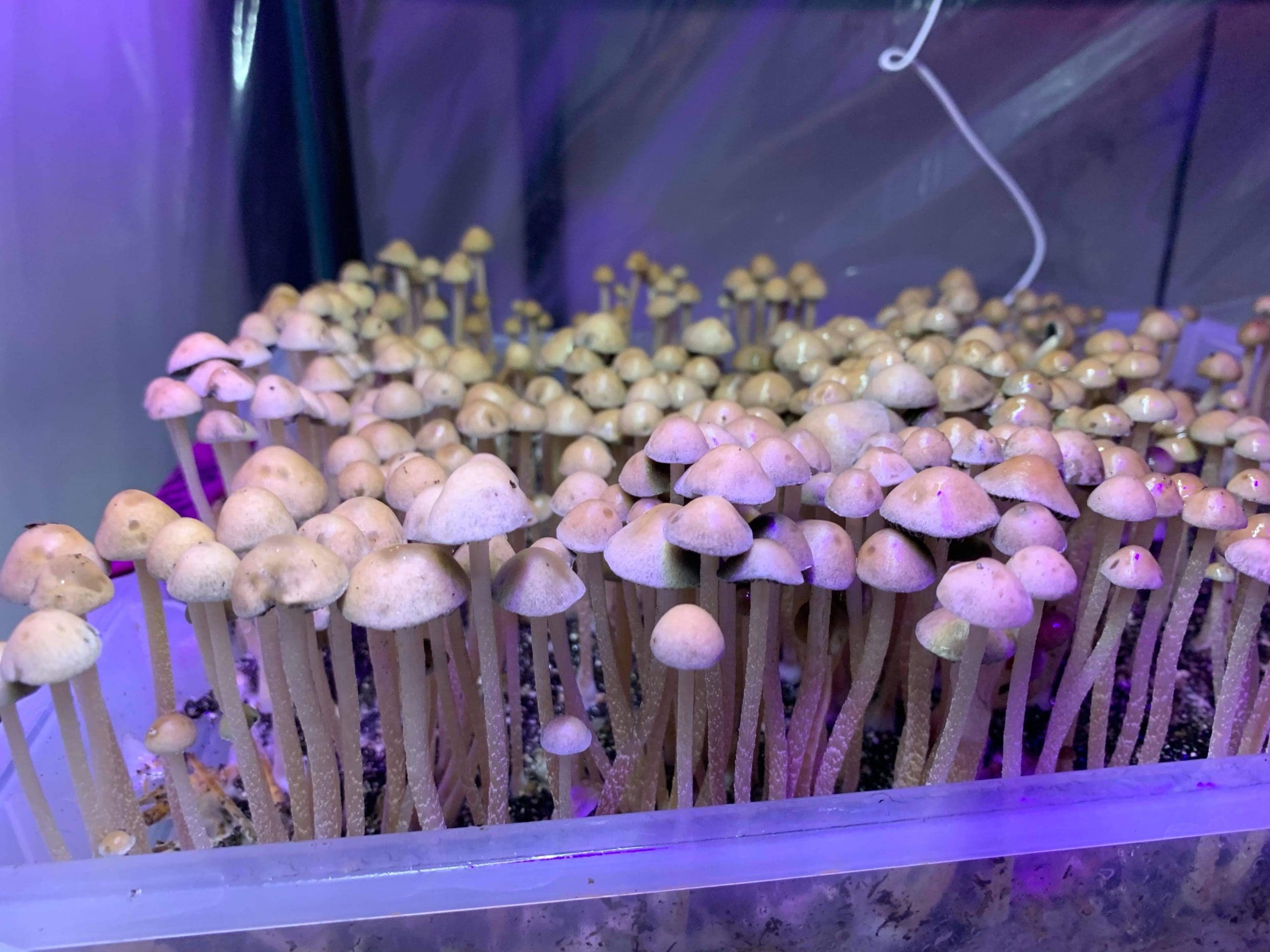
Cubensis vs Pan Cyan Mycelium & Fruiting Body Characteristics
Pan Cyan mycelium looks, smells and tastes different than psilocybe cubensis. Cubensis fruits are typically larger than Pan Cyan mushrooms with a thicker stipe and wider cap. Both mushrooms have a convex cap and have gills on the hymenium, however, cubensis caps can also be flat. Pan Cyans have a bare stipe (stem), while Cubensis typically have a ring left over from the veil.
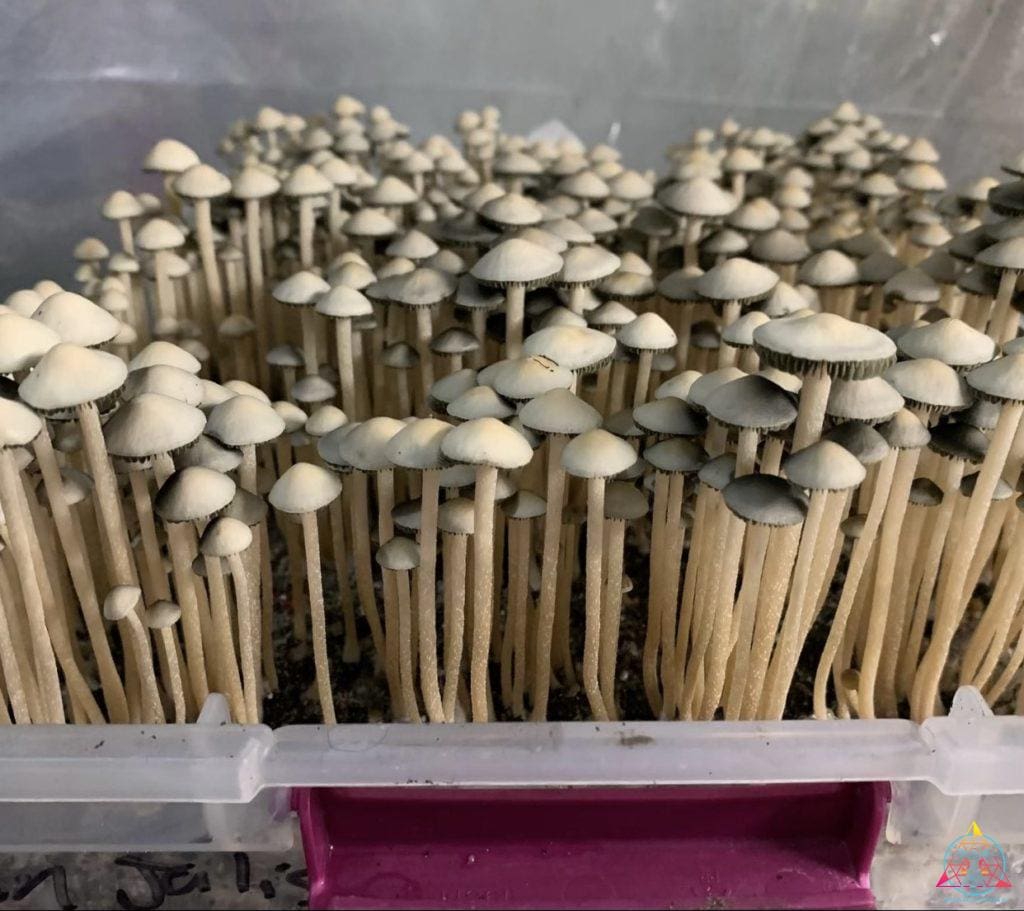
Pan Cyan Cultivation
While commonly thought of as an advanced mushroom to grow, Pan Cyans can be easily cultivated at home with little difference in the required equipment. To learn more about growing growing Panaeolus cyanescens, we recommend checking out the “Pan-Man,” Jake Oncid’s Jok Tek on the Shroomery.org.
hen cultivated using spore syringes or prints, Panaelous cyanescens germinate rapidly, sometimes showing inches of growth on an agar dish in as little as three days. When grown next to Psilocybe cubensis spores on agar, the Pan Cyans tend to reach the plates edge days before the cubensis strains. Healthy Pan Cyan mycelium will appear wispy, sometimes being mistaken for gray cottony molds.
While both Pan Cyans and Cubensis are dung loving mushrooms, the substrates used to grow them tend to be different in their preparation, fluffiness, and ingredients.
Legality
Since both Panaeolus Cyanescens and Ps. Cubensis mushrooms contain the psychoactive chemicals psilocin and psilocybin, they are considered federally illegal in the United States. However, laws are continuing to change as cities such as Oakland, DC, and Seattle have decriminalized psilocybin mushrooms.
Any Spores listed or sold on our site are for MICROSCOPY RESEARCH AND NOVELTY PURPOSES ONLY. Always follow all laws set forth by each Country, State, or Province. We take no responsibility if anything from this site is used in any fashion that can be considered illicit or illegal.
This article was updated July, 2024.
Related Articles
Maria Sabina, Mazatec Wisdom, and the Costs of Psychedelic Tourism
Maria Sabina is often remembered as one of the most influential figures in the psychedelic world, renowned for her role as a poet, and shaman, and as the woman who introduced magic mushrooms to Gordon Wasson, and thus, the Western world. Maria Sabina’s quotes...
Forage to Feast: Exploring the Biology and Culinary Magic of Morel Mushrooms
It’s a mild spring day, with the warm sun casting flecks of light on the forest floor. Deciduous tree branches tangle together overhead and close in around a grassy depression, likely the remnant of a past disruption or abandoned pathway. The mushroom forager...
The Mushroom of Immortality: Learn About Medicinal Reishi Mushrooms
Reishi, along with the entire Ganoderma Genus, is prized for its health benefits, and is among the most unique-looking fungi in our collection. In this article, we’ll discuss some of the health benefits of Reishi mushrooms and Ganoderma as a whole. We’ll also discuss...



